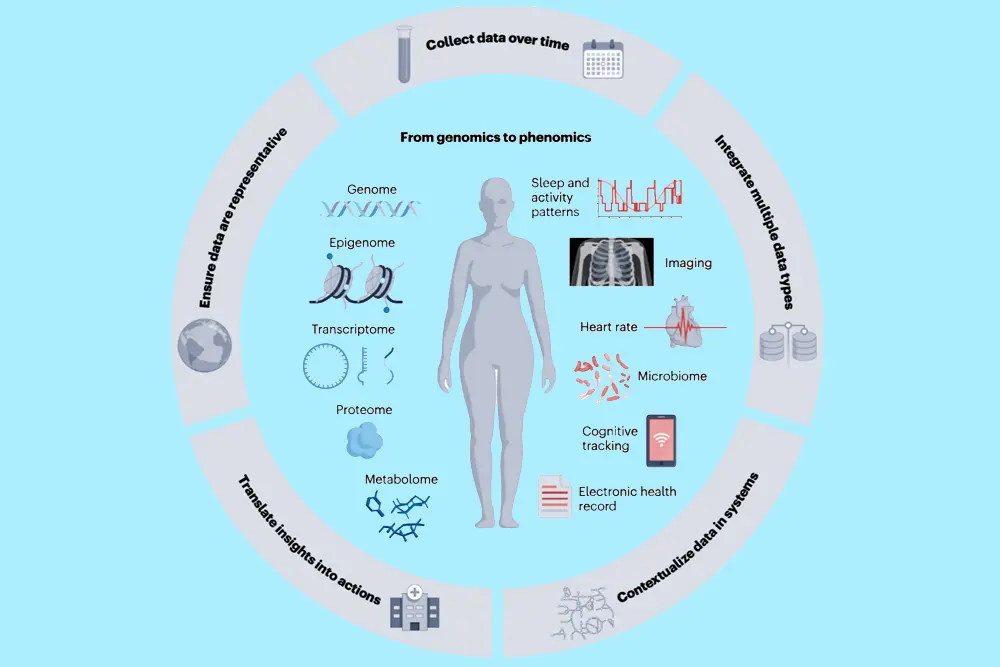- Aging commonly leads to cognitive decline, particularly in memory function, and is often associated with neurodegenerative diseases like Alzheimer’s
- However, a unique subset of older adults known as “superagers” defy this trend, maintaining memory comparable to much younger individuals.
- Researchers analyzing the white matter of superagers over a 5-year period found that despite comparable overall white matter health with typical older adults, superagers exhibited superior microstructure in specific frontal region fibers, suggesting resistance to age-related cognitive decline.
- In a new study, which examined the structural integrity of white matter in superagers using diffusion imaging, researchers explain how these individuals may preserve their cognitive abilities.
As people age, the brain undergoes structural and functional changes that can lead to declines in cognitive abilities, particularly affecting episodic memory.
These declines are often linked to neurodegenerative conditions like Alzheimer’s disease.
However, a unique group of older adults known as “superagers” defy this trend by maintaining strong episodic memory comparable to much younger, healthy individuals.
Previous studies have shown that superagers are able to resist typical age-related changes in gray matter.
In a new study, published in The Journal of Neuroscience, scientists analysed the white matter of superagers over a 5-year span, contrasting them with typical older adults.
Although there were no notable variances in the overall health of their white matter, superagers displayed superior microstructure in certain white matter fibres, notably those in the frontal region.
This finding indicates their ability to resist cognitive decline typically associated with aging.
Pitting superager brains against typical aging brains
In the study, 64 superagers and 55 typical older adults were selected from the Vallecas Project cohort, a longitudinal study of 1213 Caucasian adults in Madrid, Spain.
Researchers collected MRI data to evaluate brain white matter health and microstructure, with analysis focusing on white matter volume, lesion volume and quantification of white matter hyperintensities — often associated with cognitive decline — using the Fazekas scale.
Diffusion-weighted images underwent processing, including motion correction and voxel-wise diffusion map calculation.
Initially, superagers performed better on cognitive tests, but both groups showed similar rates of cognitive decline over time, except for a slower decline in one specific test (animal fluency) among superagers.
Superagers experience slower white matter decline
When looking at white matter health, there were no significant differences between the groups in terms of total white matter volume, white matter lesions or severity of lesions.
Both groups had a high prevalence of white matter lesions, with similar levels of severity.
However, detailed analyses of white matter microstructure revealed that superagers had higher fractional anisotropy and lower mean diffusivity — two measures related to brain decline at a microstructural level — in certain brain regions, particularly in the frontal areas.
First author Marta Garo, PhD, a neurobiologist at The Laboratory for Clinical Neuroscience, Centre for Biomedical Technology, Universidad Politécnica de Madrid- Spain, explained the key findings to Medical News Today.
Garo said that the “study has found a better preservation of white matter microstructure over time in superagers when compared to an elderly control group with normal memory for their age.”
“This can be interpreted as superagers can avoid the normal ageing changes that occur in white matter microstructure, for that reason we say in the title that superagers resist typical age-related white matter structural changes,” she added.
“The paradigm of superagers shows how an old person can naturally age with excellent memory. This is key when trying to fight against the pathological deterioration of memory because the study of the superager brain will help us understand which brain structures are important to have a good memory as we age. The identification of these structures could potentially help to inform brain stimulation treatments.”
– Marta Garo
Paul Psychogios, MD, a board certified medical geneticist and Associate Director of the Providence Clinical Genetics and Genomics Program in Burbank, CA, not involved in this research, commented that “this is a significant study complementary to the authors’ prior study on the significance of gray matter changes on brain health and superaging.”
“It provides a detailed understanding into mechanisms of brain protection against (or resistance) to age-related memory loss and eventually the development of dementia revealing amongst other factors, the influential role of vascular health in a different ageing process than described before,” Psychogios explained.
Ben Rein, PhD, a neuroscientist and science communicator, also not involved in this research, told us that “this is an interesting and useful study” not least because “there is tremendous interest and utility in understanding what makes certain people age gracefully, while others are more prone to cognitive decline.”
“There’s seemingly a growing interest in identifying ways to enhance brain resilience through aging — as a separate venture to simply looking for treatments for conditions like dementia. This paper is a step in that direction,” Dr. Rein explained.
How to preserve brain health as we age
Garo pointed out that “in a previous study using the same cohort of superagers, we studied what lifestyle and medical factors differentiate superagers from an elderly control group with normal memory for their age.”
“We found that superagers have better mobility, better mental health, less glucose disorders and hypertension problems and a higher interest in music,” she told us.
Yet Garo cautioned that “[w]e cannot say that controlling all these factors will help you become superagers since we cannot infer causality from this study.”
“Nevertheless, these findings point out that having good mental and physical health, as well as having hobbies could contribute to healthy ageing,” she added.
Rein agreed, listing several recommendations for healthy aging, including:
- maintaining good sleep hygiene
- regular physical exercise
- social interaction
- mental exercise.
“Sleep and physical exercise are proven pillars of brain health, but social interaction doesn’t get enough attention,” Rein emphasized. “As we age, we spend more time alone, and isolation is bad for the brain. Spending time with others is a great way to exercise and protect your brain.”
“Mental exercise is important because it’s the input that sustains brain function. If you lie in bed for weeks, your leg muscles will atrophy because they’re not being used. The brain is similar, especially in later life. There is a saying in neuroscience: ‘use it or lose it.'”
– Ben Rein, PhD
“Engaging in cognitive activities and challenges — i.e., reading, puzzles, hobbies — exercises pathways in your brain that may otherwise be vulnerable to atrophy,” he explained. “When those pathways are exercised, the brain is more likely to keep them around […] and here we can begin to see a direct link to the study.”
“Those who use their brain more — especially for high level cognitive tasks — may be more likely to show greater white matter integrity. Activating certain circuits literally preserves their structure,” said Rein.
The neuroscientist concluded that, “certainly, there are many other important influences in these superagers (genetics, lifestyle, etc.) but the brain is like a muscle: The more you use it, the stronger it will be, and the more resistant it will be to atrophy.”




